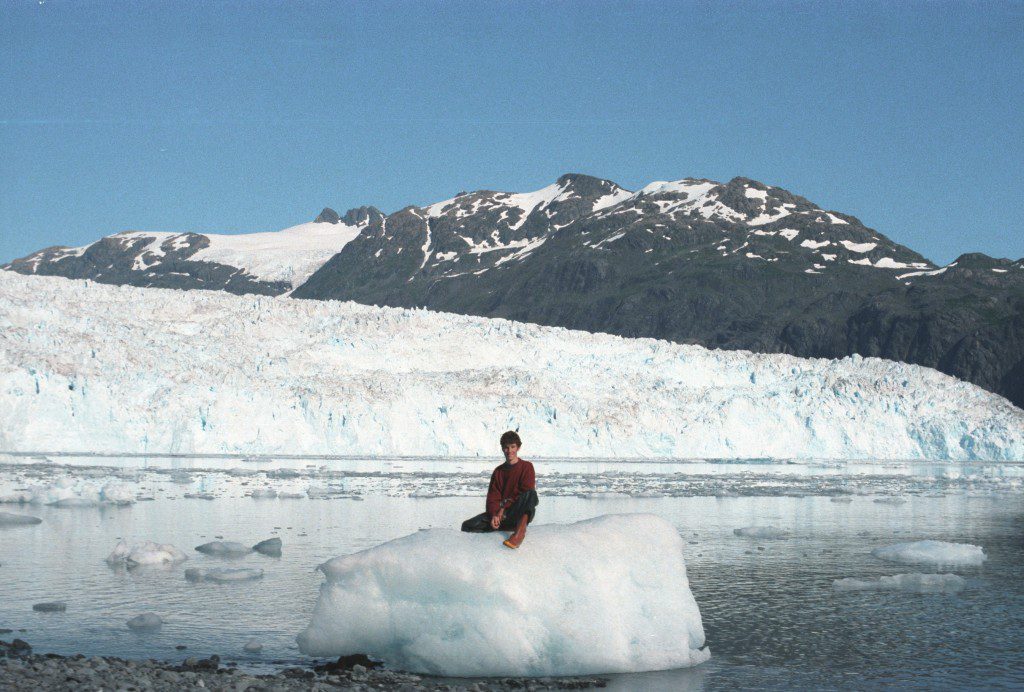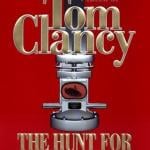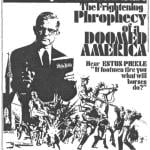 Speaking of things that inspired Noah director Darren Aronofsky when he was young, he wrote an article for the Huffington Post today on a trip he made to Alaska in 1986, and how it affected his views on the environment and the stewardship of creation, etc.
Speaking of things that inspired Noah director Darren Aronofsky when he was young, he wrote an article for the Huffington Post today on a trip he made to Alaska in 1986, and how it affected his views on the environment and the stewardship of creation, etc.
In his article, Aronofsky writes:
In 1986 I stood on the shores of Prince William Sound in Alaska. I was there, a high-school student with the School for Field Studies, studying the thermoregulation strategies of harbor seals. The area we were working in was exceedingly remote, truly untouched by human hands. It was vast. And I stood very small. Transplanted from the teeming concrete sidewalks of Brooklyn, I found myself struck by the magnificence and majesty of this virgin land. It was a feeling that I can only describe as Awe. Our professors taught us to leave the land just as we’d found it, carting out everything we’d brought in, even burning our used scraps of toilet paper. We didn’t need to be told twice; it was clear that this was a kind of holy place, a sanctuary.
Twenty-five years ago this week, that very same beach was utterly debased. The Exxon Valdez ran aground, spilling 10.8 million gallons of crude oil over 1,300 miles of coastline. The untouched land was slathered with the dregs of our never-ending thirst for power and expansion. Remnants of that oil can still be seen on those beaches today, and marine life populations still have not recovered. The earth and sea that inspired my moment of childhood Awe has been corrupted, the sanctuary despoiled.
The quarter-century anniversary of that tragic event comes as my film Noah is about to be released in theaters around the world, and I cannot help but reflect upon the relationship between that terrible spill and the story from Genesis about how God nearly annihilated the human race because our behavior in this world grieved Him to His heart. . . .
Much further down in the article, he adds:
I think back 25 years and see images of cormorants, feathers smeared with oil, struggling vainly, desperately to fly. It is an image that inspired our depiction of the Nephilim, fallen angels encrusted with tar, unable to wing their way to Heaven.
Between those two excerpts, he makes an interesting contrast between the first two chapters of Genesis, and the Creation stories contained therein:
The first two chapters of Genesis both tell the story of Creation. These two tellings lay out two seemingly contradictory relationships between mankind and the natural world. In the first story man is formed and given dominion over the Earth and all the beasts within it. If we look around us, we cannot deny that we do indeed possess that dominion. Where once Prince William Sound was essentially untouched, now, with our understanding of man’s influence on climate, we can truly say that there is nowhere on our planet that is not influenced by mankind and our activities. Like it or not, we do preside over this world. The question is simply how we will choose to exercise that power.
In the second version of the Creation story, God breathes the soul into Adam and places him in the Garden “to tend and to keep it.” In this telling we are asked to hold the planet and its inhabitants in our safekeeping. It is our first responsibility. Made in God’s image as we are, possessing the power to create and destroy worlds, holding dominion over the globe and its inhabitants, we are asked to be good stewards. We have taken the dominion that was offered us. Have we taken the responsibility of stewardship?
This is interesting, for a few reasons. For one thing, in the film, the Creation story that Noah tells his family is taken primarily from Genesis 1. On the other hand, the film’s villain, Tubal-Cain, has some dialogue about humans “subduing” the animals and having “dominion” over them that is clearly taken from Genesis 1, as well.
But if, in Aronofsky’s view, the two Creation stories give us two very different — and maybe even opposite — directives, then that may provide another framework for interpreting the relationship between Tubal-Cain and Noah within the film. Each of those characters represents a different side of that dichotomy in the text.
This picture of 17-year-old Aronofsky in Alaska accompanies the article:
Coincidentally, on the same day that Aronofsky posted an article on the two Creation stories in Genesis, I posted the final installment of my interview with him, in which I asked what he thought about the theory that there are two Flood stories in Genesis as well. (The question of “environmental messages” also came up.) Check it out.













